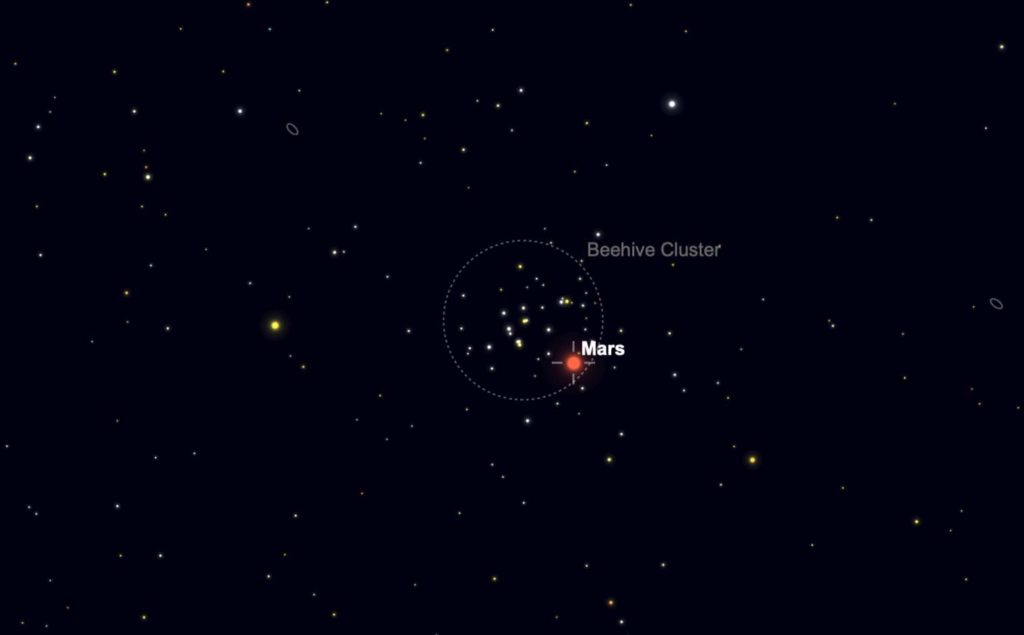Sky Report: June 21 – June 27

We’ll do another rundown of the planets.
Venus was behind the sun in March, and since then it’s been moving left-ward away from the sun, where it sets later each night and becomes easier to see. It now sets 90 minutes after the sun and is moderately low in the west during evening twilight. It can be very pretty if there are thin clouds in the area that are reddened by the setting sun. Notice how white Venus is; its clouds reflect the sun’s white light without changing its color.
Mars is to the upper left of Venus, but it’s only 1/200th as bright, so they’re very unequal. Venus’ motion around the sun is taking it toward Mars as we see them in the sky, and the angular distance between them depends on the night you look. Watch Venus approach Mars and wait for their conjunction next month.
Mars too is orbiting the sun, although slowly, and its motion carries it in front of the famous Beehive Star Cluster on the nights of the 22nd and 23rd. The Beehive is a collection of around 1,000 stars that were born together and that are about 600 light years from earth. You could easily see the Beehive with your unaided eye if it were higher and against a darker sky, but you’ll want a small telescope or binoculars to enjoy this very unusual sight.
Jupiter rises around midnight and then it’s the brightest thing in the sky other than the moon. Saturn is to the right of Jupiter and it’s as bright as the brightest stars. The moon is below Saturn on the night of the 26th and Jupiter on the 27th. As the moon orbits the earth, it occasionally passes in front of a bright star, and that happens early on the morning of Friday the 25th. For those of us living in the western half of the US, the east edge of the full moon covers, or occults, the star Nunki, which is in Sagittarius. The precise time depends on your location; for Kanab it happens at 3:59 a.m. MDT. At 4:59 Nunki reappears from behind the west edge of the moon. The full moon is so bright that you’ll need a small telescope or binoculars to see the star next to it. There will be further and more favorable occultations of Nunki later this year.
The Sky Report is presented as a public service by the Stellar Vista Observatory, a nonprofit organization based in Kanab, Utah, which provides opportunities for people to observe, appreciate, and comprehend our starry night sky. Additional information is at www.stellarvistaobservatory.org. Send questions and comments to
John@StargazingAdventures.org.






Comments are closed.